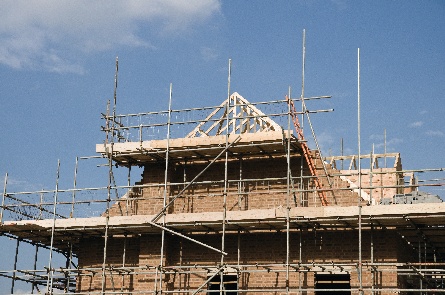You are viewing 1 of your 1 free articles
How to survive a downturn
With the economy beset by uncertainty, investing in sub-market rentals could maintain affordable housing supply, says Matthew Bailes
The one thing that is clear about the consequences of the Brexit vote is that we face a prolonged period of uncertainty.
Uncertainty makes people and businesses cautious. They postpone decisions and wait to see how things play out. If consumer spending and investment go down, the chances of a recession increase. Counter cyclical government spending and monetary policy interventions can help. But a high and rising deficit and historically low interest rates are not an auspicious starting point.
“Given the risks and challenges ahead, it is an option we can ill-afford to ignore.”
The housing market is not immune to these risks. If purchasers start to wait or offer substantially less prices will go down. This in turn will affect consumer behaviour, compounding the risks above. Worse still, because the system for building new homes – including nowadays in the social sector – restsop largely on selling at a profit, there is a significant risk that developers and housing associations will build fewer homes. This leaves government with a problem. Whatever the short term conditions, we need many more homes, and a downturn in house building would further compound other economic risks.

There may also be an opportunity. Whereas investment in some sectors depends on the terms of trade with the EU, house building is driven largely by domestic factors. Developers and Housing Associations can also scale up reasonably quickly, assuming of course that the industry does not lose capacity before action is taken to prevent a downturn. Get the conditions right and this sector could even promote growth despite uncertainties elsewhere.
So what can government do? First of all, it needs to recognise that we may have a demand-side problem – that is, uncertainty over the willingness of potential buyers to buy.
The next step is to recognise that we are in a potential hole, and to stop digging. From that perspective the indefinite postponement of the Starter Homes initiative would be sensible. At the moment this looks like creating a new and different form of sales risk (and associated cash flow issues) for developers, and competition that might dissuade housing associations from building more shared ownership. An early announcement would help reassure the market that government is serious about making a difference.
There are other options available to government that could de-risk Development for sale. It is already supporting a large number of transactions through Help to Buy. There may be scope to tweak or extend the terms to offer developers (and mortgage lenders) more comfort. Government could also take an equity position in some major schemes and/or offer some form of “soft” loan, again drawing on similar schemes post-credit crunch. In the past, government has also relaxed stamp duty for a limited period – an intervention which, if successful, would help developers and support housing transactions generally, in turn boosting consumption of the goods people buy when they move home (carpets, White goods etc.).

Source: Shutterstock
Interventions to support outright sale of new properties can help, but there is a problem. If the market believes there will be a price correction, it is pretty hard to incentivise profit-seeking developers (and their lenders) to invest in new schemes at scale. As a result, if there is a loss of confidence, propping up the demand side on homes for sale would probably be about damage limitation.
That leaves us with rented housing, which has in the past proved more resilient to economic shocks.
The market may itself to re-allocate homes for use as market rent. If rent levels remain strong and prices drop, yield will increase and that might well tempt both institutional investors and small scale buy-to-let investors into the market.
However, it would be brave to rely on this process to maintain supply. Although they may have a longer term view, rental investors will also be wary of buying something today that may be worth less tomorrow. Some might also have longer-term concerns about yield potential in the light of the Brexit vote. And since developers will be wary of building in the hope that rental investors turn up, more investors might need to inject cash up front, or even share some development risk. Perhaps government can help, for example by relaxing recent tax penalties or providing guaranteed debt or even yield? Nonetheless, on the face of it there is no silver bullet here either, especially for schemes outside of established rental markets.
This leads us last, but not least, to affordable housing. Sub-market rental housing is the traditional counter-cyclical buffer in our housing system. There are good reasons for this. Because it is subsidised, demand is usually solid, if not growing at time of recession. And if land and build costs go down it becomes more viable.
However, you wouldn’t start from here. Government grant support is almost exclusively directed at shared ownership, which like market housing carries a significant sales risk. Appetite to invest in regulated rental accommodation – general needs and supported housing – is limited by a combination of short-term rent cuts and long-term uncertainty on both rents and welfare support.
Nonetheless, given the limitations of other options and the acute shortfall in affordable rented housing, there are excellent reasons for government to explore this territory. There are some simple first steps. If there was more flexibility to convert shared ownership to rent there would be more takers for the next programme. Government could expedite its review of supported housing to give providers more certainty so they can invest in much needed new provision. Government might also use affordable housing grant to prop up other areas of the market – for example to buy unsold market homes and, if needs be, support homeowners at risk of repossession. It need not look too far back in the files to see how these interventions might work.
Such changes would certainly shore up supply, and help limit the reduction in house building. But that feels like a modest ambition, especially given that growth in other areas of the economy is likely to be weak. So I think as a sector we should make the case for going further – a major expansion in affordable rented accommodation.
There are choices about how this is done. The traditional approach – grant for affordable and social rent – is certainly possible. But rent cuts, uncertainty on future rental yield and greater doubts about the availability of cross-subsidy from sales increase the need for subsidy at a time when Government cash is likely to be thin on the ground. Government could of course offer more comfort on rents. But this would re-open forecast housing benefit costs and the effect might be diluted by market uncertainty about whether government could really be trusted, given past experience.
An alternative would be to come up with a new product. This would open up options in terms of rent levels and allocations, mitigating the effects of risk around regulated rent and (potentially) welfare. For example, government could grant fund a product where rent was capped at 80% of market levels via contract (not law or regulation), allocations were left to housing associations, and renters had a clear pathway into shared ownership. Such a product would need a lot less subsidy than traditional regulated models.
As well as being useful in the short-term, such an initiative would point to longer term reform. There is a clear gap in the market for a rental product aimed at those in low paid employment. Such people are squeezed out of the market at the moment, especially in the South – too poor to get on the housing ladder but not sufficiently needy to qualify for social housing. Reform of the sector such that those with chronic needs were offered traditional social housing, and others a “shallow subsidy” product with a flexible path into home ownership would make good sense. It could be good in terms of supply and support a functioning Labour market.
There would also be potential social benefits. It is hard to argue that housing was the sole or even main cause of dissatisfaction that fuelled the Brexit vote. Indeed, the region with the most acute housing crisis (London) was the most enthusiastic about continued membership of the EU.
Nonetheless, there was a clear message that some people feel they are losing from globalisation, and are deeply uncomfortable with the level of inward migration. The fact that housing supply has failed to keep pace with demand, and that many younger people are locked out of the sort of housing their parents could afford, is contributing to these problems. With the right support, a large expansion of the provision of sub-market housing could help address these issues, as well as provide a much needed short-term boost for the economy. Given the risks and challenges ahead, it is an option we can ill-afford to ignore.
Matthew Bailes, group chief executive, Paradigm Housing Group











